Construction
How to Build a Custom Software for Hard and Soft Construction Budget Control
October 29, 2025 • 87 Views • 26 min read
Bohdan Vasylkiv
CEO & Co-Founder
Managing a construction project’s budget isn’t just about keeping costs down. You should know precisely where every dollar goes and why, being able to differentiate and balance hard and soft costs in construction.
Whether it’s the materials that build a structure or the services that keep it running smoothly, having complete visibility over both hard and soft costs determines the success or failure of a project.
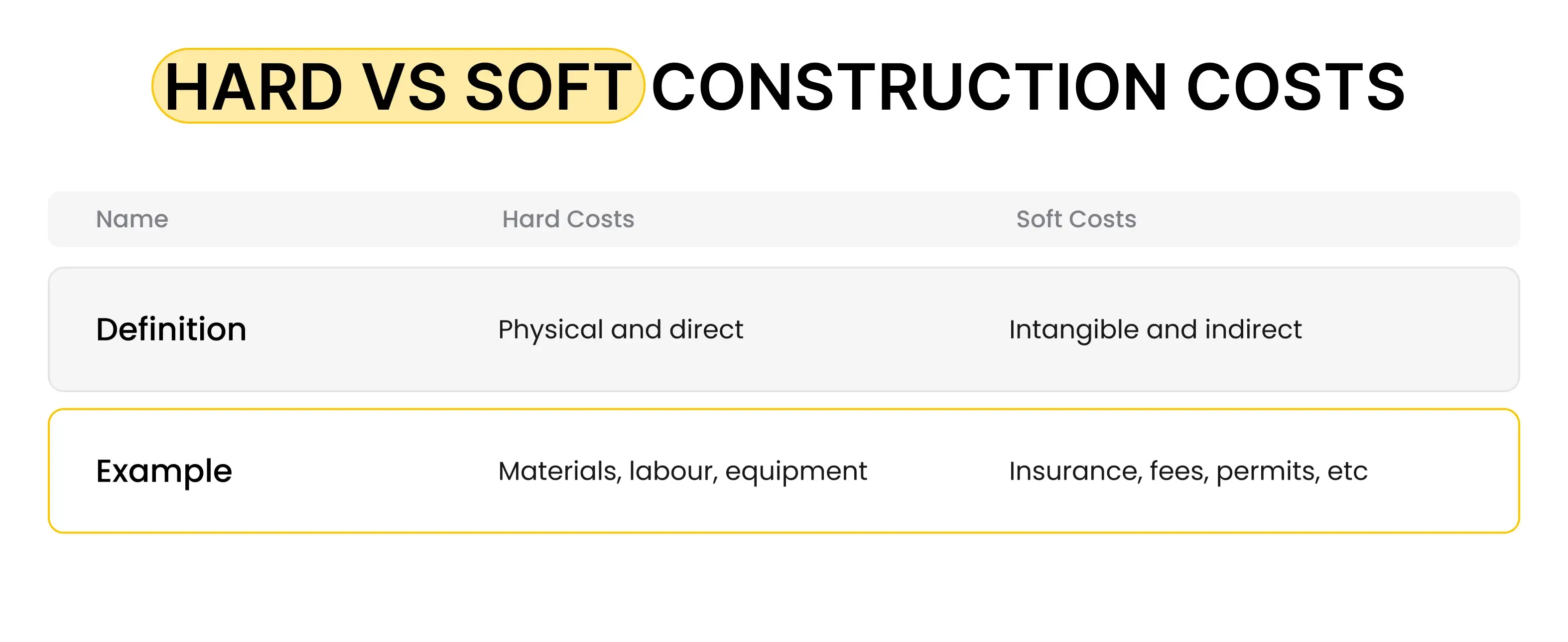
That’s where custom construction budget control software comes in. It is not just a simple spreadsheet replacement, but a powerful tool that brings structure, intelligence, and predictability to cost control.
In this article, you will learn what hard and soft costs really mean, why they matter, and how to build a tailored digital solution that helps you master every aspect of construction budget management.
Understanding Hard Cost vs Soft Cost in Construction

Before building any system for budget and cost control in construction, it’s essential to understand what we’re managing. The difference between hard cost vs soft cost construction determines not just how you plan your budget, but how you track and manage your spending throughout the project lifecycle.
What Are Construction Hard Costs?
Construction hard costs are the tangible, physical elements of a project, i.e., things you can touch, see, and quantify.
These typically include:
- Building materials (cement, steel, wood, glass, etc.)
- Labor and subcontractor wages
- Equipment rental and machinery
- Site preparation and utilities
Hard costs are the backbone of your project. They’re easier to estimate because they directly relate to visible progress on the job site. Yet, even minor fluctuations in material prices or labor rates can quickly cause overruns.
What Is a Soft Cost in Construction?
A soft cost in construction refers to all the non-physical expenses that support the completion of the project. For example, they might include:
- Design, architectural, and engineering fees
- Legal, administrative, and insurance costs
- Project management and consulting services
- Permits, taxes, and financing costs
Soft costs are often underestimated, even though they can make up 30% of a total project budget. Unlike hard costs, they continue beyond project completion. For instance, they will include further project maintenance, marketing, or warranty services.
Why the Balance Matters?
Misunderstanding the distinction between hard and soft costs in construction can lead to poor financial decisions. By only tracking direct expenses, you lose visibility into the operational and compliance costs that impact overall profitability.
A proper construction budget control system must treat both categories equally, connecting them to your project’s timeline, tasks, and risks. Balancing both expenses sounds even more essential when you take into account the fact that, unlike other industries, construction profits are typically just a few percent of a project budget.
Why is Budget and Cost Control in Construction Worth Investment
Cost overruns plague the construction industry. According to our latest research, over 80% of projects exceed their original budgets. Why? Spreadsheets and manual tracking leave too much room for human factors, such as errors, missed updates, and delayed reporting.
Proper budget and cost control construction project management software isn’t just about numbers, it’s about decision-making. Such systems provide managers with real-time insight into spending, help forecast future costs, and ensure accountability at every stage.
Digital construction budget management unifies data from multiple sources, including procurement and subcontractor invoices, as well as equipment maintenance, delivering a single source of truth. As a result, there will be more everyday issues, such as version control and data synchronization; everything will be automatically updated and shared with all participants.
So, when both hard costs and soft costs in construction are visible in one place, teams can react faster and prevent minor oversights from snowballing into costly delays.
Challenges in Managing Direct and Indirect Costs in Construction
Understanding direct and indirect costs in construction is the next layer of control.
Direct costs are tied to specific project tasks, such as labor, concrete, framing, and others. On the other hand, Indirect costs are shared expenses. They include items such as site supervision, safety equipment, or temporary facilities.
The Trouble with Indirect Construction Costs
Indirect construction costs are often underestimated or inconsistently allocated. Many teams still rely on disconnected systems for tracking them, making it difficult to see their impact on total project performance.
Common challenges related to poor indirect construction costs management include:
- Dispersed financial data between departments
- Limited visibility of overhead costs
- Poor integration with accounting software
- Time-consuming manual reconciliation
Without digital oversight, controlling these costs becomes reactive instead of strategic. Fortunately, many IT companies offer tailored software development services that not only address the issues mentioned above but also provide additional benefits.
For instance, apart from a single source of truth, such tailored systems can meet even the most unique and personalized business requirements, also providing tools to streamline multiple processes.
Why Custom Software Beats Off-the-Shelf Tools
Although numerous ready-made project management apps are available, they often fail to capture the complexity of real-world construction projects.
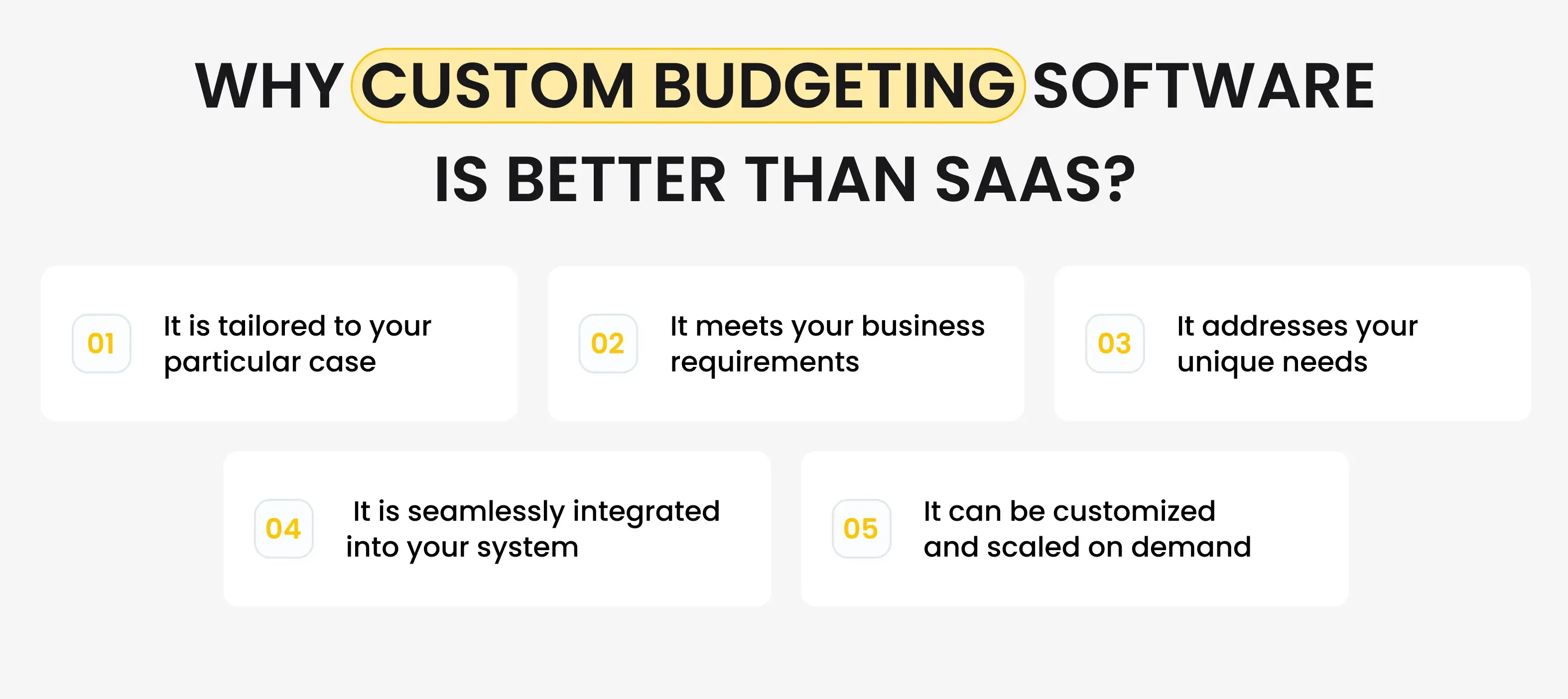
These off-the-shelf tools are designed for general use, rather than for managing the nuances of hard cost vs soft cost construction. As a result, despite offering some practical solutions and features, read-made SaaS systems cannot compete with custom construction software development services. And here’s why.
Custom Solutions Address All Your Needs
A custom construction budget control software is designed specifically for your company’s structure, workflows, and data ecosystem. Such cooperative projects are always flexible and prioritize your business. At the same time, SaaS solutions are rigid, requiring users and clients to adapt to their existing limitations. However, it is not the only advantage.
Key advantages of custom solutions include:
- Full integration with ERP, accounting, and BIM systems
- Tailored reporting on construction hard costs and soft costs
- Role-based access for finance, procurement, and field teams
- Custom alerts and predictive analysis
A bespoke tool ensures cost control in construction projects is transparent, scalable, and perfectly aligned with your business goals. Among the most valuable features is the possibility to integrate with outdated management systems, enabling cross-platform data sharing, rule creation, and process customization.
The above list is not exhaustive and does not include all services and functionality. For instance, even SaaS construction budget management solutions deliver a particular set of features.
Key Features of Construction Budget Control Software
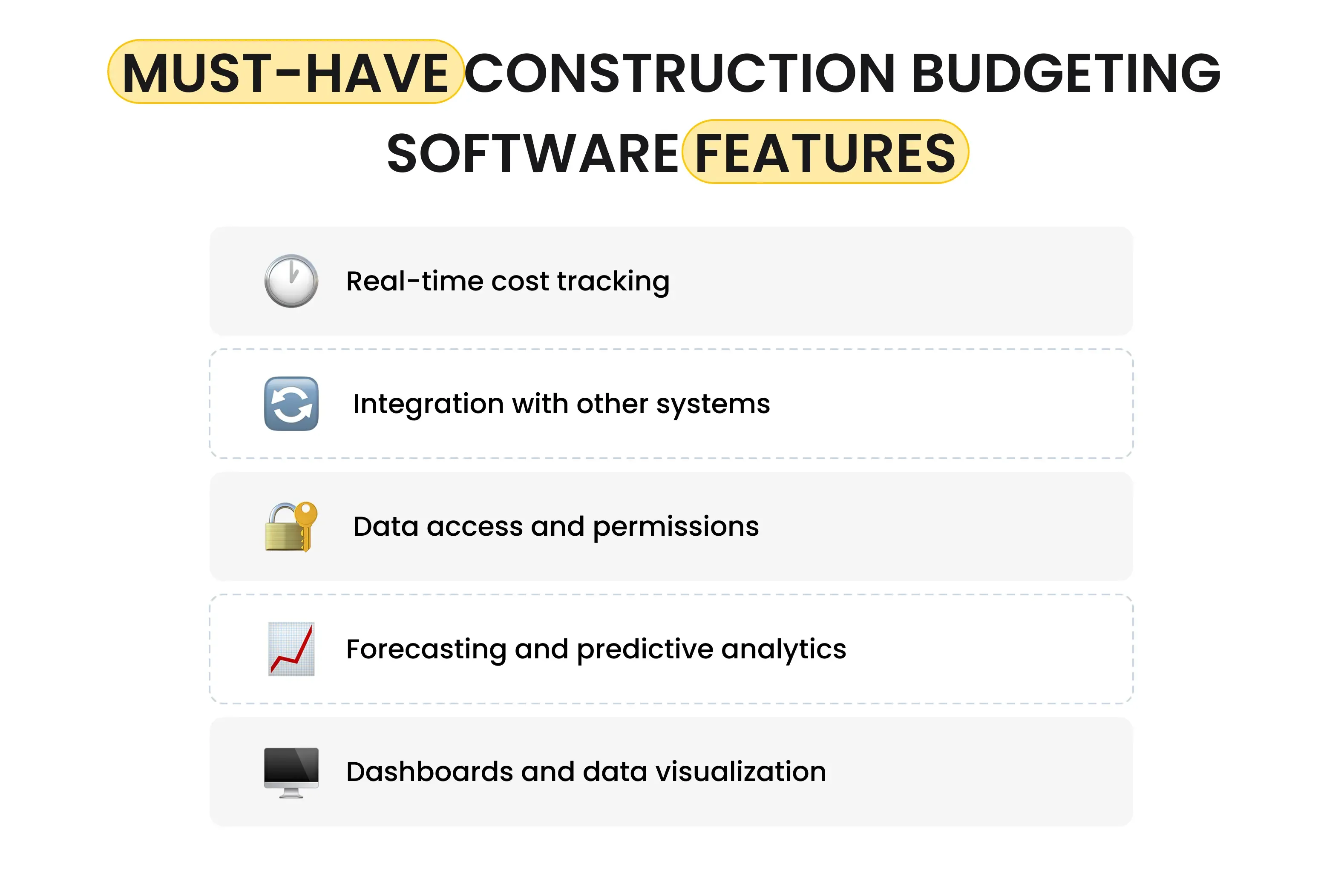
Efficient budget and cost control in construction management software is based on a few key features and services:
- Real-time hard and soft cost tracking
- Forecasting and predictive analytics
- Role-based access and permissions
- Integration with different systems
- Dashboards for cost-related data visualization
Real-Time Hard and Soft Cost Tracking
Automatic data collection from field tools, invoices, and sensors lets you monitor both hard cost vs soft cost construction in real time — without waiting for end-of-month reports.
Forecasting and Predictive Analytics
AI-driven forecasting helps you anticipate cost fluctuations and identify risk areas before they affect profitability. This feature is handy for balancing construction hard costs and indirect construction costs.
Role-Based Access and Permissions
Different departments see the data they need, when they need it. This helps to improve accountability while maintaining financial security. Besides, role-based access and permissions help to ensure data security and prevent potential leakage.
Integration with ERP, BIM, and Accounting Systems
Custom-built software connects seamlessly with tools like SAP, Procore, or QuickBooks, synchronizing financial data and eliminating double-entry errors.
The advantage of the custom development approach is the possibility to integrate your cost management tools into any type of operating software, regardless of how old or complex it might be.
Visual Dashboards for Construction Budget Management
Interactive dashboards in construction enable easy visualization of project progress, comparison of actual vs planned costs, and analysis of both direct and indirect costs.
As a result, managers can more easily and quickly “read” data and reports, better understand the latest updates, and make faster and more accurate decisions.
Step-by-Step Guide: How to Build a Custom Software for Construction Budget Control
The creation of the most efficient hard cost and soft cost construction management software should always include the following steps:
- Discovery and requirement analysis
- Designing for cost visibility and ease of use
- Selecting the right tech stack
- Software development and integration
- Testing, Deployment, and Ongoing Optimization
Frankly, this shortlist is not final. You can always scale the roadmap by adding extra stages or operations. Yet, these steps must always be included.
Discovery and Requirement Analysis
Start by identifying what problems your company wants to solve. Are you struggling with tracking soft costs in construction? Do you need automated cost forecasting? A thorough discovery phase defines scope, user roles, and integration points.
Designing for Cost Visibility and Ease of Use
User experience is crucial. Your design should present complex data, such as construction hard costs and indirect expenses, in simple, intuitive dashboards. Include visual indicators for over-budget or delayed items.
Selecting the Right Tech Stack
Choose scalable technologies like cloud platforms, APIs, and frameworks that allow integration with other enterprise tools. Think about security, mobility, and performance.
Development and Integration
Build core features around data automation, cost tracking, and reporting. Integrate accounting modules, document management, and approval workflows to ensure end-to-end cost control in construction projects.
Testing, Deployment, and Ongoing Optimization
After the development and integration of software, you don’t stop. Software requires continuous testing, optimization, scaling, and other ongoing maintenance.
Thorough testing ensures financial accuracy and system reliability. After launch, gather user feedback to refine and optimize functionality continuously.
Common Challenges and How to Overcome Them
Even with the best planning, building custom software comes with its own hurdles:
- Data migration issues: Historical data must be cleaned and standardized.
- User adoption resistance: Offer training and demonstrate early value.
- Integration complexity: Choose APIs that align with your existing systems.
- Budget overruns: Define clear milestones and maintain agile feedback loops.
A good development partner will anticipate these challenges and build contingency plans into your roadmap.
Pros and Cons of Developing a Custom Budget Control System
Creating custom software for construction budget control is an investment in long-term efficiency, visibility, and profitability. But like any strategic decision, it comes with both strengths and challenges. Understanding these from the start helps companies plan smarter, maximizing the pros while minimizing the cons.
The Pros: Why Custom Software Is Worth It
1. Tailored to Your Business Needs
Unlike generic off-the-shelf tools, custom solutions are designed specifically for how your company operates. Every construction firm has unique budgeting workflows, reporting formats, and approval hierarchies. A tailored solution ensures that your software mirrors those processes perfectly, not the other way around.
Instead of adjusting your operations to fit a template, you define how the system works. That means fewer workarounds, fewer data silos, and faster team adoption.
2. Full Visibility into Hard and Soft Costs
A key advantage of custom systems is their ability to unify data. You get a single platform that tracks hard cost vs soft cost construction metrics in real time, connecting site-level spending to office-side decision-making.
You can view construction hard costs, such as materials and labor, alongside soft costs in construction. This includes design, insurance, and overhead, ensuring nothing slips through the cracks. This 360° transparency strengthens forecasting accuracy and makes financial reporting far more reliable.
3. Seamless Integration with Legacy Tools
Most construction companies already use a mix of ERP systems, accounting tools, and scheduling platforms. Off-the-shelf solutions rarely integrate with all of them seamlessly.
Custom software, however, is built with integration in mind, connecting seamlessly to your existing ecosystem through APIs or middleware. This not only reduces double entry and human error but also ensures cost control in construction projects remains consistent across departments.
4. Scalability and Future-Proofing
Every construction business grows, so do its financial complexities. A custom-built platform can evolve alongside your operations.
New project types, departments, or cost tracking requirements can be added without disrupting the system. You’re not limited by pre-set user caps or feature bundles. Your software grows as your needs do.
5. Long-Term Cost Savings
Although the initial investment may seem higher, custom software ultimately pays off over time. It eliminates subscription fees for multiple third-party tools, reduces manual labor, and minimizes the cost of errors or rework caused by poor visibility.
By consolidating budget and cost control in construction into one centralized hub, businesses save both time and money, gaining complete ownership of their digital assets.
The Cons: Challenges and How to Overcome Them
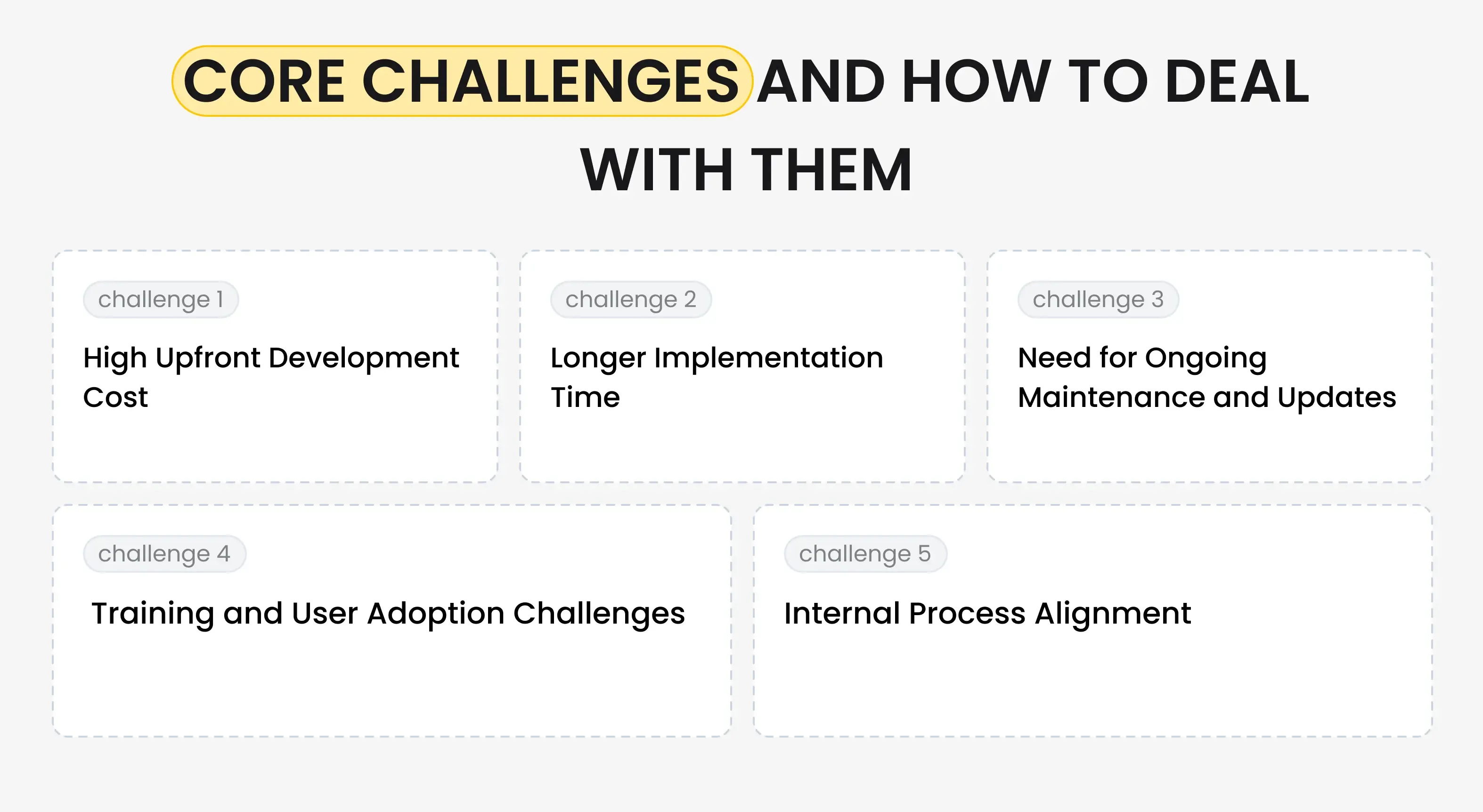
Despite the clear advantages, developing a custom budget control system isn’t a small undertaking. It involves upfront costs, time, and a strong alignment between technology and business teams. Let’s break down the potential drawbacks and how to handle each effectively.
1. Higher Upfront Development Cost
Building custom software typically requires a larger initial budget than buying a ready-made app. Design, development, and testing are time-consuming processes, and skilled specialists aren’t cheap.
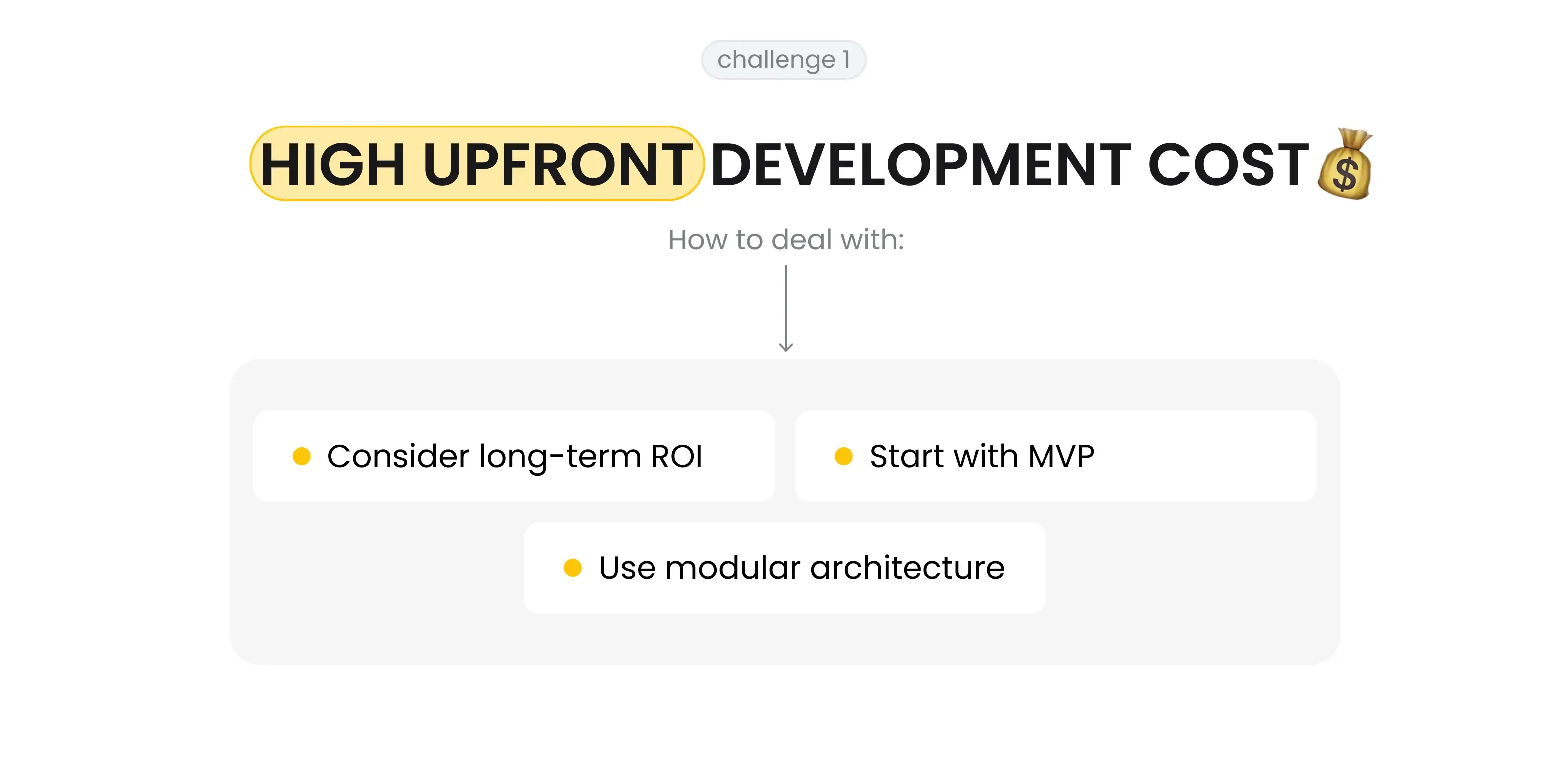
How to overcome it:
- Treat it as a capital investment, not a cost. The long-term ROI often exceeds that of off-the-shelf tools within 12–24 months.
- Start with an MVP (Minimum Viable Product) — develop the most critical features first (e.g., cost tracking, reporting) and scale later.
- Use modular architecture to add functionalities gradually, spreading costs over multiple phases.
2. Longer Implementation Time
Unlike plug-and-play software, a custom solution takes time to plan, build, test, and deploy. Depending on complexity, development can last several months.

How to overcome it:
- Apply Agile methodology to deliver software in smaller, usable iterations, rather than waiting for a “big launch.”
- Run pilot programs on select projects to test functionality before a company-wide rollout.
- Keep close collaboration between your development partner and internal stakeholders to avoid delays.
3. Need for Ongoing Maintenance and Updates
A custom system is your responsibility, so you’ll need continuous support for updates, bug fixes, and new features. This ongoing care is crucial for maintaining performance and security.
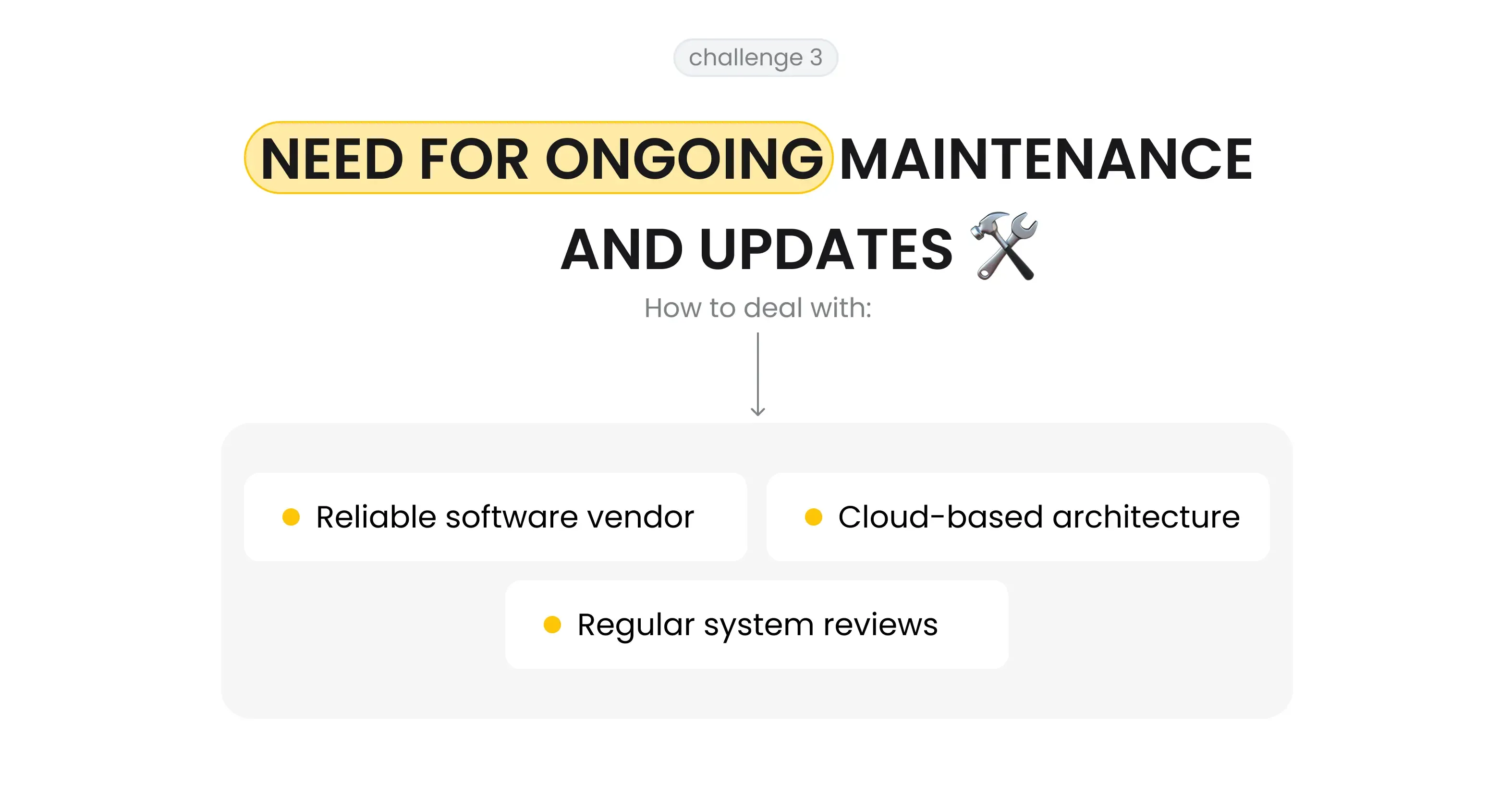
How to overcome it:
- Partner with a reliable software vendor offering post-launch maintenance contracts.
- Use cloud-based architecture to simplify updates and backups.
- Schedule quarterly system reviews to ensure features evolve with your business goals.
4. Training and User Adoption Challenges
Even the best system fails if teams don’t use it properly. Resistance to change is common, especially in traditional construction environments accustomed to spreadsheets and manual processes.
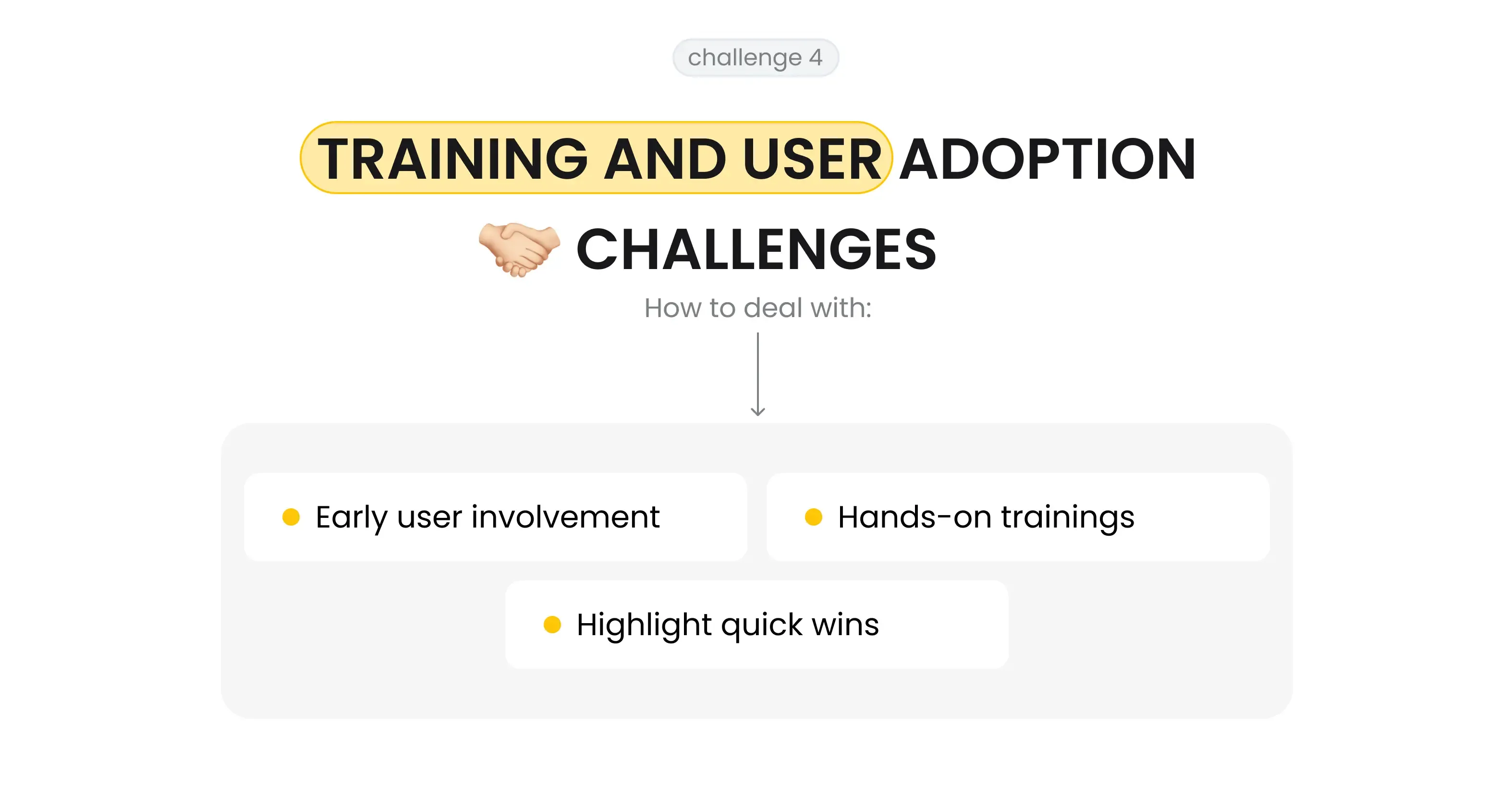
How to overcome it:
- Involve end users early to gather their feedback during the design phase.
- Provide hands-on training sessions and short video tutorials.
- Highlight quick wins, such as how real-time tracking reduces reporting time, to demonstrate immediate value.
5. Internal Process Alignment
A new tool often exposes inefficiencies in existing workflows. Teams may realize that different departments handle cost data inconsistently or follow separate approval chains.

How to overcome it:
- Use software development as a chance to streamline operations, not just digitize them.
- Standardize terminology, categories, and workflows during the discovery phase.
- Assign a budget control champion — a project manager responsible for ensuring adoption and consistency.
Balancing the Equation
Yes, developing a custom construction budget control software requires planning, funding, and patience. But it’s an investment that pays off with unmatched accuracy and control.
Each con can be mitigated with the right strategy and a collaborative development partner. The result? A flexible, future-ready system that gives you total visibility over hard cost vs soft cost construction, improves financial discipline, and drives long-term profitability.
In short, while the journey may start with a higher investment of time and money, the outcome is a system built exactly for your business, not a generic tool you’ll outgrow in two years.
Building for Control, Profitability, and Growth with Incora
Effective construction management starts with understanding and controlling the distinction between hard and soft costs in construction.
Custom software doesn’t just help track numbers. It transforms how teams collaborate, forecast, and make financial decisions.
Whether you’re managing construction hard costs, tracking soft costs in construction, or struggling with fragmented spreadsheets, a tailored digital system can bring it all together under one intelligent platform.
Partnering with an experienced software development team like Incora ensures your solution fits your exact operational and financial needs, helping you achieve better cost control in construction projects and drive consistent profitability.
Ready to take control of your construction budget? Start building your custom solution today with Incora, and turn data into your competitive advantage. All you need to do is sign the contact form, and we will do the rest.
What’s your impression after reading this?
Love it!
22
Valuable
10
Exciting
7
Unsatisfied
1
FAQ
Let us address your doubts and clarify key points from the article for better understanding.
What are hard costs in construction projects?
Hard costs are tangible expenses directly tied to building activities, such as materials, labor, equipment rental, and site preparation. These are typically easier to track and estimate as they are visible on the job site.
What are soft costs in construction, and why are they important?
Soft costs include indirect expenditures like design and engineering fees, legal services, permits, insurance, and project management. These can represent up to 30% of a project's budget and often continue even after construction ends, impacting long-term profitability.
Why is it crucial to balance hard and soft costs in budget control?
Proper balance provides comprehensive financial oversight, helping avoid budget overruns, improving forecasting accuracy, and preventing minor oversights from becoming major delays. Treating both cost types equally connects expenses to timeline, tasks, and risks.
What challenges do companies face in managing direct and indirect costs?
Common issues include dispersed financial data, limited visibility of overhead expenses, poor integration with accounting systems, and labor-intensive reconciliation. Digital solutions help transform cost control from reactive to strategic management.
How does custom construction budget control software outperform spreadsheets and generic SaaS tools?
Custom software offers real-time cost tracking, predictive analytics, role-based access, system integrations, and visual dashboards. Unlike generic SaaS platforms, it is tailored to specific business workflows, improves visibility, and delivers long-term savings.
you may also like
Management Systems
Construction Project Management Software for Small Business: Complete Guide
Construction
AI Compliance Agent for Construction: Automating HSE and Regulatory Compliance
Construction
AI Shift Scheduling for Construction: Is This the Future of HR and Payroll?
Construction
From 10 to 2 Hours: How Conversational AI Agents Transform Construction Report Generation
Construction
How AI Negotiation Agents Improve Construction Procurement [And Why Do You Need It]
Construction,
Real Estate
How Construction Workflow Management Software Helps to Reduce Costs and Boost Efficiency?
Construction
How Integrated BOQ Software Bridges the Gap Between Construction Departments
Construction
How to Create a Procore Alternative Software for a Construction Business
Construction
How to Deal With Weaknesses of Construction Financial Management Software?
Real Estate
How to Select the Right Construction Management Software for Your Business
Construction
Investing in the Right Construction Reporting Software: Features That Make a Difference
Construction
Is Voice Technology Worth the Investment for Construction Firms?
Construction
Overcoming Integration Challenges: Making Construction Data Work Together with BI Tools
Management Systems
Simple Construction Software for Construction Planning: Case Study
Construction
The Complete Guide to AI Construction Document Review for Project Management
Let’s talk!
This site uses cookies to improve your user experience. Read our Privacy Policy
Accept
Share this article